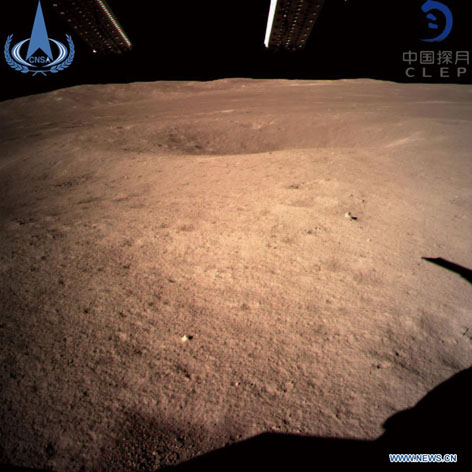On January 3, 2019, the Chang’e 4 probe sent back photos of the Von Karman crater in the South Pole-Aitken basin, after its successful soft landing, the first ever by a man-made vehicle, on the surface of the far side of the moon. This feat was hailed as opening a new chapter in mankind's lunar exploration.
Joining hands with their collaborators, CAS researchers have made important contributions to the lunar exploration mission. For instance, the research and development of its ground application system was led by the National Astronomical Observatories, Chinese Academy of Sciences (NAOC), which was in charge of deliberating and presenting the system’s science objectives, making scientific exploration plans of the payloads aboard the Chang’e-4, monitoring the payloads’ operation, receiving, processing and explaining scientific exploration data, managing and releasing the data, and their applied research.
In addition, the payloads carried by the lunar probe were mainly developed by CAS researchers. For instance, the lunar penetrating radar (LPR) and the very low frequency radio spectrometer (VLFRS) were designed by the CAS Aerospace Information Research Institute (AIR). Both of them began their operations successfully after the soft-landing of the lunar probe, making China the first country conducting radio observation on the far side of the moon and filling the scientific gap of radio astronomical observations at the frequencies between 100KHz~10MHz.
Furthermore, the orbit measurement of the lunar probe was conducted by research teams headed by the CAS Shanghai Astronomical Observatory using very long baseline interferometry (VLBI). The VLBI orbit determination system is composed of different CAS telescopes located in various places, including the Tianma 65m Radio Telescope in Shanghai, the Miyun 50m Radio Telescope in Beijing, the Nanshan 25m Radio Telescope in Xinjiang, and Kunming radio telescope in Yunnan.
Last but not the least, more than 20 kinds of key materials developed by CAS researchers were used the carrier rocket, the inspector and lander of the lunar prober.


